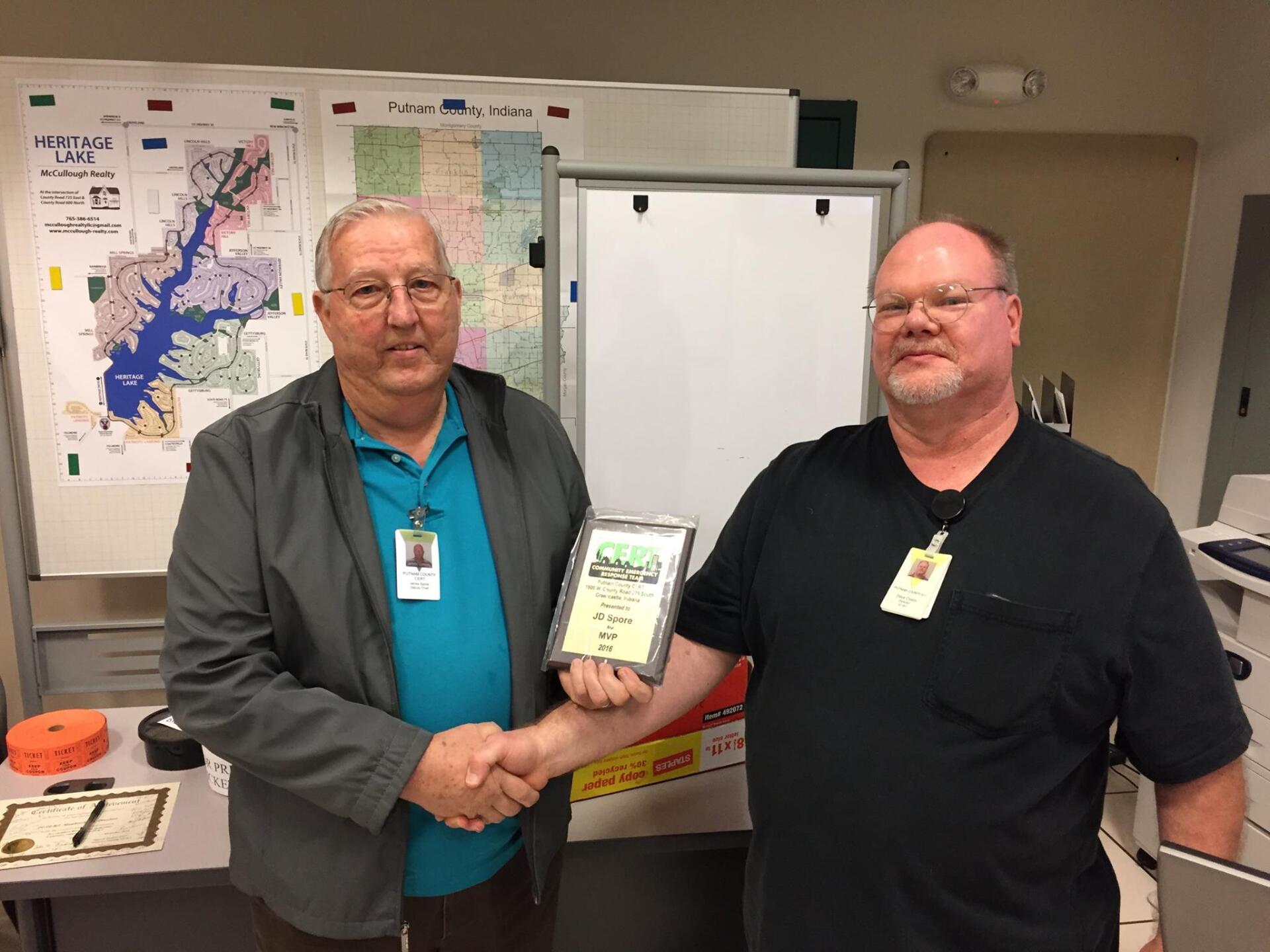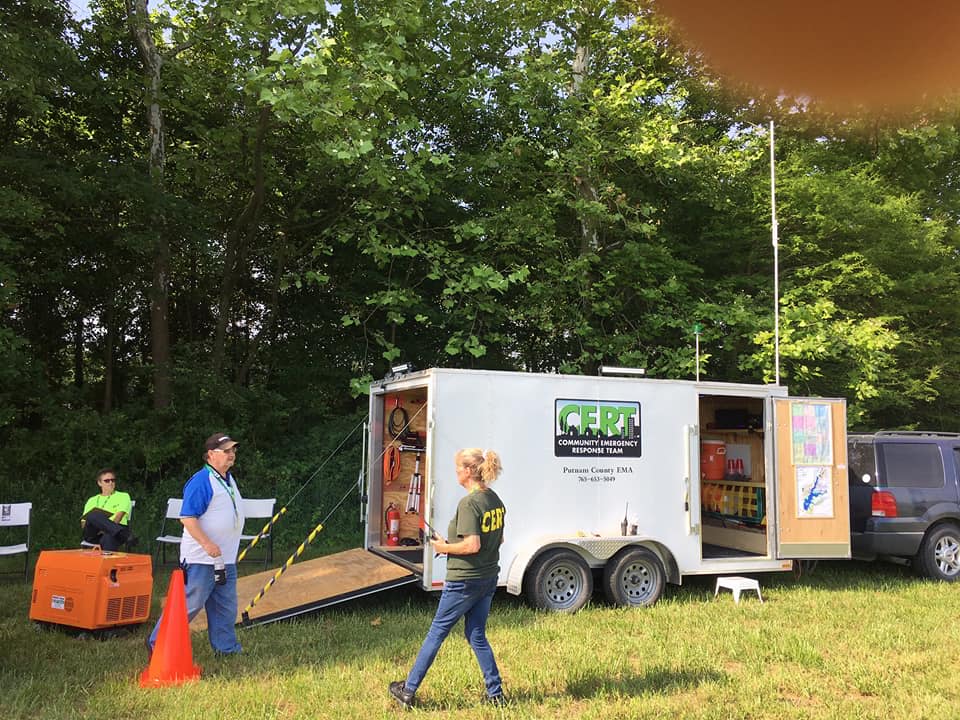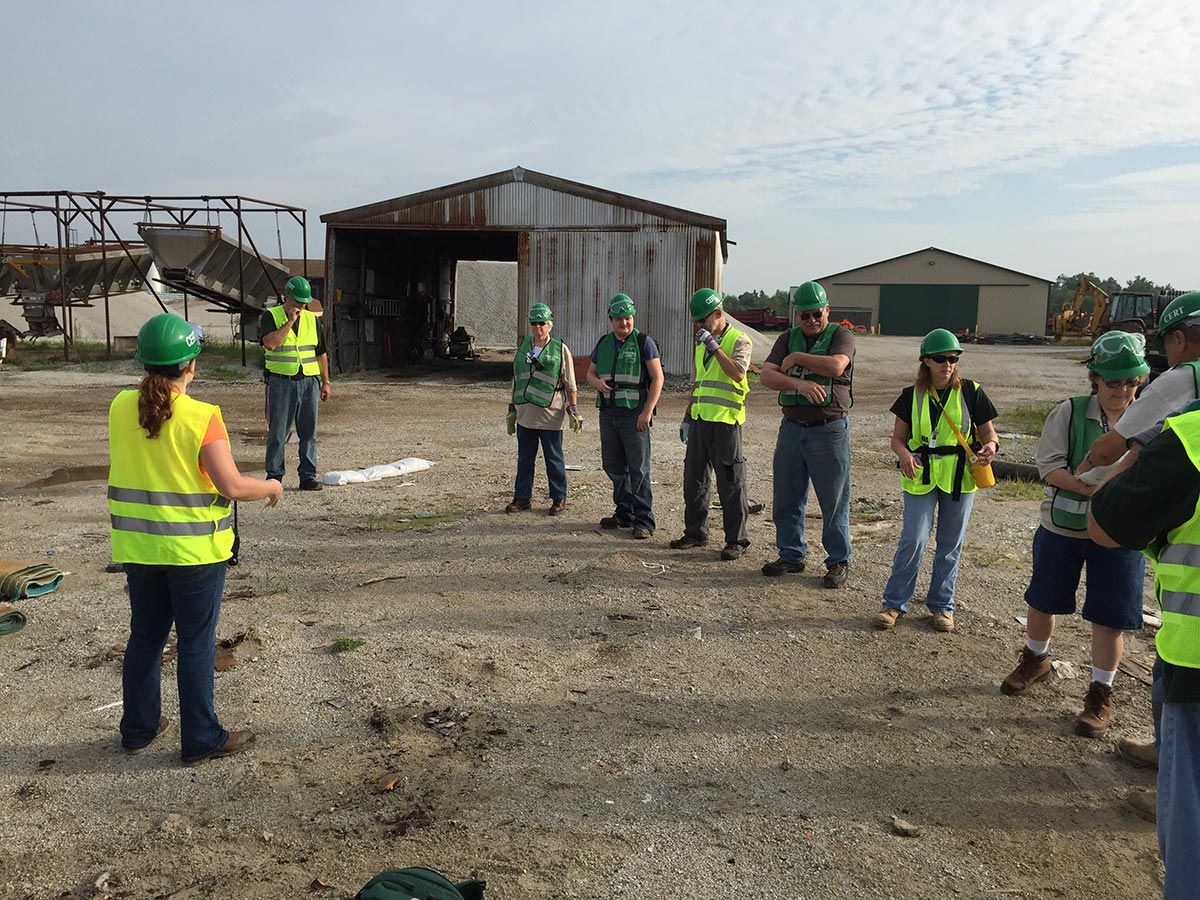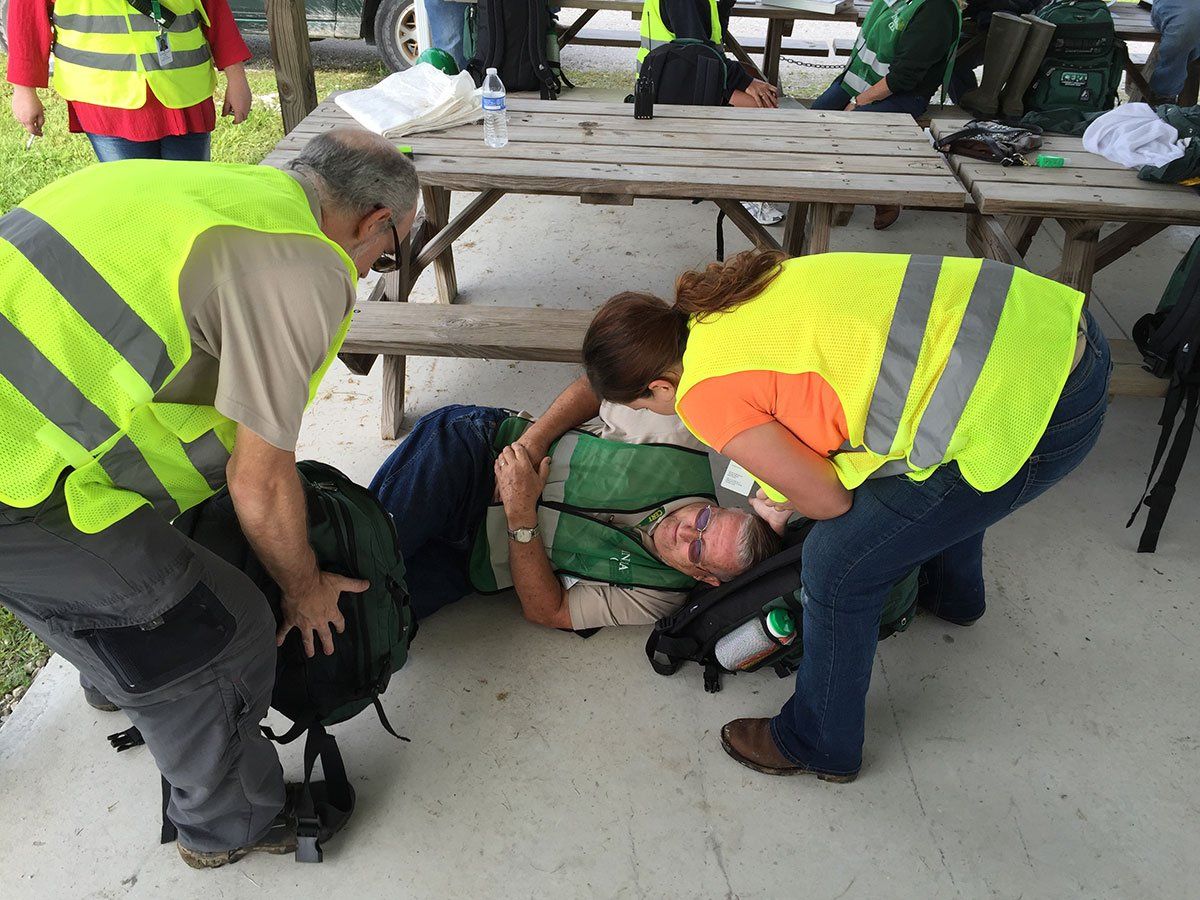Project Lifesaver Rescue
Twelve-minute rescue amounts to years of work at Project Lifesaver
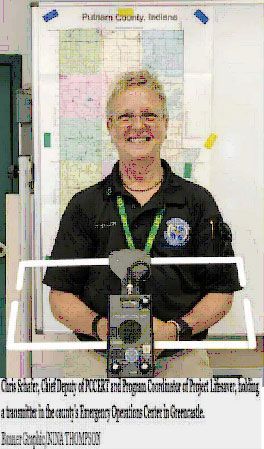
After a day of herding cattle together on May 16, the neighbors and family of 80-year-old Richard Langdon of Reelsville noticed he’d suddenly disappeared from the group, completely out of sight. After 15 minutes of looking for him, deputies, EMS and the fire department were called to search for Langdon, who they’d noted has Alzheimer’s disease. With the setting sun and dense woods nearby, Richard needed to be found, and fast.
Having dementia makes Richard prone to “wandering,” where one walks or drives away suddenly. This could be due to feeling lost or confused in otherwise familiar places, or because of a sudden, unexplained urge. Wandering threatens the safety of six in 10 dementia patients according to the Alzheimer’s association, and within 24 hours, 61 percent of those wandered will become injured or dead, according to the Putnam County Community Emergency Response Team (PCCERT).
Proactively, Langdon’s wife of 51 years and lifelong EMT, Sheila Langdon, enrolled the couple in Project Lifesaver, a organization that provides completely free tracking signal bracelets to those prone to wandering in Putnam County. In the event that a person who is wearing the tracker goes missing, trained PPCCERT and Project Lifesaver volunteers can utilize a radio-signals to emit a high-pitched chirp from the homing device that changes pitch depending on the proximity to the tracker, leading a search party to the exact location of the missing person.
As a trained member of PCCERT, Reserve Deputy Ken Rozelle was aware of Langdon’s status as a Project Lifesaver client. He called Chris Schafer, program coordinator, who assembled a team and made it to Fillmore in 45 minutes just before 11 p.m. before the arrival of the Project Lifesaver team, however, the K9 unit and first responders became stumped after conducting a grid search near where Langdon was seen last.
“Across the street was a very swampy, thick woods with briar,” Rozelle recalled. After looking at the muddy slopes and rough terrain, “we thought, ‘There’s no way he walked through all this stuff,’” Rozelle recalled.
Sure enough, within 12 minutes after the arrival of Schafer and nine other Project Lifesaver volunteers, the chirp led them to Langdon, who was found in those dark and dense woods, with some minor cuts and tears. At 11 p.m., despite the laundry-list of difficulties, the search for Langdon concluded and he was returned home after an EMS inspection. Langdon was the first client to go missing after Project Lifesaver’s Putnam County debut in 2021.
“It’s a lifesaver. I wouldn’t even have him here today if it hadn’t been for that tracker,“ Mrs. Langdon said. And, from her experience working with dementia patients, Mrs. Langdon noted that “they’re in their own world. When you call their name, they don’t answer,” making it even harder to find wanderers with nonverbal tendencies. Mrs. Langdon’s recent hip replacement has added more stress to caretaking for her husband, so Project Lifesaver keeps her worries at bay amid her husband’s apparent neuological changes.
Although this was their first rescue, Project Lifesaver has connected with 10 Putnam County clients who are prone to wandering, each with unique circumstances. Chinoah Johnson’s oldest son, Branzlee, 7, has Autism and Down syndrome. Johnson discovered Project Lifesaver in 2022 at the Putnam County Resource Fair, where Project Lifesaver staff offered their services.
“Branzlee doens’t understand safety or boundaries,” Johnson said. Her son is also nonverbal, and because Johnson is a full-time caregiver, babysitter and mother, knowing her son’s whereabouts are imperative to his care. “He is naturally drawn to water and fire. Anything that catches his eye, he just takes off,” she added. Autistic individuals, both children and adults across the spectrum, are prone to wandering. According to PCCERT, 93 percent of wandering deaths are tragically caused by drowning. Since joining Project Lifesaver, however, Johnson has gained some peace of mind.
“I’ve started doing more adventurous things with him. I’m not scared to bring him out into public, because if he takes off, I know I can get help,” Johnson said, allowing her and Branzlee to engage with the community safely.
“The Project Lifesaver volunteers are absolutely amazing,” Johnson said. Every 30-60 days, the same PCCERT volunteer is sent to a given client’s home to replace the battery on the client’s transmitter and fastening band, as well as bonding with caregivers and families. Even when they’re out of town, a caregiver can disclose the location and timeline of a clients’ vacation to the PCCERT team, and Project Lifesaver will then offer to send client information to local first-responders.
Offering these proactive measures are embedded in the philosophy of Project Lifesaver and PCCERT, both organizations staffed by local volunteers who undergo FEMA certification, as well as crowd, triage and damage control training. But regardless of these qualifications, “it’s not just search and rescue. We establish relationships,” said Schafer.
The profiles for each client do not only gather information about people like Mr. Langdon’s or Branzlee’s medical needs, but more nuanced deescalation techniques and behavior triggers, according to Schafer. When it comes to relationship building and compassion, “volunteer-minded people just understand these things,” Schafer added.
Accessability is also a crutial part of Project Lifesaver. “I knew we would not do this if we couldn’t offer our service 100 percent free of charge,” she said, despite other counties with Project Lifesaver charging a fee to caregivers for transmitter bracelets, costing up to $450 a piece. But years of outreach has led to donations both local and national, whether from the Putnam County Community Foundation to the American Alzheimer’s Foundation. What started with seven volunteers and a handful of transmitters, Project Lifesaver now has upward of 30 volunteers and dozens of transmitters, preparing to help more clients as wandering awareness grows.
Although Langdon’s rescue is a victory, many individuals and families are not as fortunate. “Everybody knows somebody who could use this,” Schafer said, but gaining awareness is the first — and most difficult — step. Getting involved as a caretaker or volunteer with Project Lifesaver can be done on the PCCERT website, www.pccert.org, or by contacting Chris Schafer at chris.schafer@pccert.org. After the first chirp from the receiver sounded alongside 30 first responders in the
flashing lights beside the road, “everyone looked at us and we knew we’d find him,” said Schafer.
“We walked him out of those woods, and it was such an emotional moment for everybody,” Schafer said.“All two years of work, of fundraising, of training, it all culminated in those 12 minutes,” she added.


